100.
Barthel has produced a table showing what
characterized the months on Easter Island:
|
In Barthel 2 a summary is given over the
months on Easter Island (according to
the structure of a modern calendar). I
have adapted the table somewhat.
Red
means the 6 months when sun is
'present': |
|
1st quarter |
2nd quarter |
3rd quarter |
4th quarter |
|
He Anakena
(July) |
Tagaroa uri
(October) |
Tua haro (January) |
Vaitu nui
(April) |
|
Same as the previous month. |
Cleaning up of the fields. Fishing is no
longer taboo. Festival of thanksgiving (hakakio)
and presents of fowl. |
Fishing. Because of the strong sun very
little planting is done. |
Planting
of sweet potatoes. |
|
Hora iti
(August) |
Ko Ruti
(November) |
Tehetu'upú (February) |
Vaitu potu
(May) |
|
Planting of plants growing above
the ground (i.e., bananas, sugarcane,
and all types of trees).
Good time
to fish for eel along the shore. |
Cleaning of the banana plantations, but
only in the morning since the sun
becomes too hot later in the day.
Problems with drought. Good month for
fishing and the construction of houses
(because of the long days). |
Like the previous month. Some sweet
potatoes are planted where there are a
lot of stones (pu). |
Beginning of the cold season. No more
planting. Fishing is taboo, except for
some fishing along the beach. Harvesting
of paper mulberry trees (mahute).
Making of tapa capes (nua). |
|
Hora nui
(September) |
Ko Koró
(December) |
Tarahao
(March) |
He Maro
(June) |
|
Planting of plants growing below
the ground (i.e., sweet potatoes, yams,
and taro).
A fine
spring month. |
Because of the increasing heat, work
ceases in the fields. Time for fishing,
recreation, and festivities. The new
houses are occupied (reason for the
festivities). Like the previous month, a
good time for surfing (ngaru) on
the beach of Hangaroa O Tai. |
Sweet potatoes are planted in the
morning; fishing is done in the
afternoon. |
Because of the cold weather, nothing
grows (tupu meme), and there is
hardly any work done in the fields. Hens
grow an abundance of feathers, which are
used for the festivities. The time of
the great festivities begins, also for
the father-in-law (te ngongoro mo te
hungavai).
There is
much singing (riu). |
|
The spelling of the names of the months
are according to Vanaga. |
The month of June was cold
and nothing was growing. There was no work done in
the fields. Therefore this could hardly be the month
when Kuukuu worked the ground:
... On the twenty-fifth day of the first
month (Vaitu Nui), Ira and
Makoi set sail; on the first day of June
('Maro'), the bow of Ira's
canoe touched land again. Ira's canoe
appeared on the distant horizon, came closer
on its course, and sailed along, and finally
(one) could see the (new home) land. The
canoe reached the islets (off the coast),
and Ira saw that there were three
such islets. Ira said, 'Hey you, crew
of young men, the vision of Hau Maka,
our father, which he revealed to me, has
come true. There are 'the handsome sons of
Te Taanga, who are standing in the
water', for this is the name that the dream
soul of Hau Maka gave them.
Unforgotten (? kai viri kai viri) are
they, these three. And therefore this is the
(right) land lying there; this is Te Pito
O Te Kainga, which also received its
name from the dream soul.' (Manuscript E p.
17.)
The canoe continued its exploration and in a
sweep sailed on to Hanga Te Pau. They
went ashore and took the food with them.
They pulled the canoe onto the beach and
left it there. Ira sat down with all
the other (companions) and spoke to Makoi:
'You shall mark the land for me and make it
known (by its name)!' After that, Ira
spoke these words: 'This is the digging
stick (? ko koko), Kuukuu.
You shall work the land for me and plant the
yam roots!'
We have to
move back a quarter in time-space in order to somehow put
the dates in Manuscript E in their correct places. A quarter of 26,000 years
(the anciently adopted measure for the precessional
cycle) equals 6500 years and at
that remote time the stars had been fixed at their
proper dates.
June + 6 months (shifting from north to the Easter Island
position south of the equator) - 3 months (drawing back the time shift
during 6500 years due to the
precession) = September. By observing the stars
close to the Full Moon in September it could be
deduced that in the beginning the Sun (in his
Mars attire) had been here in the month of MARCH
(in Swedish: 'MARS').
Therefore digging the ground for the yam roots should
on Easter Island be done in
September, whereas Manuscript E made Kuukuu
(the planet Mars)
dig the ground in the month of He Maro. The
creators of the manuscript had pushed the mythical
events 3 months back in precessional time and everyone would have
understood this, for by placing the important
digging to the wrong month of He Maro it became a
Sign of attention, to make the reader reflect.
In
mythic time (*64) it had been the ferocious Sky Bull
(not a team of oxen) who was
making the furrows.

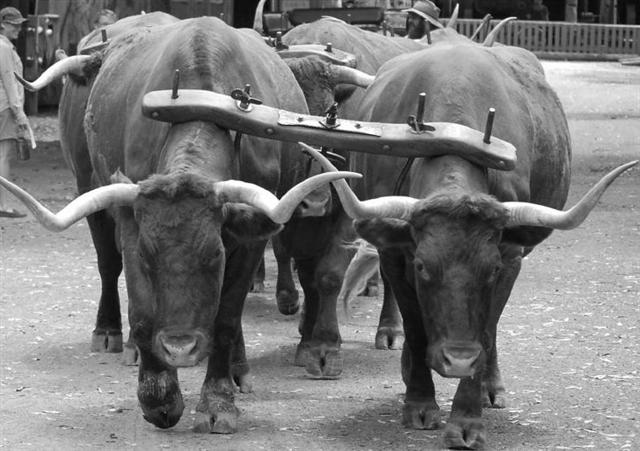
... Ishtar, scorned, goes up to heaven in a
rage, and extracts from Anu the promise that
he will send down the Bull of Heaven to
avenge her. The Bull descends, awesome to
behold. With his first snort he downs a
hundred warriors. But the two heroes tackle
him. Enkidu takes hold of him by the tail,
so that Gilgamesh as espada can come
in between the horns for the kill. The
artisans of the town admire the size of
those horns: 'thirty pounds was their
content of lapis lazuli'. (Lapis lazuli is
the color sacred to Styx, as we have seen.
In Mexico it is turquoise.) Ishtar appears
on the walls of Uruk and curses the two
heroes who have shamed her, but Enkidu tears
out the right thigh of the Bull of Heaven
and flings it in her face, amidst brutal
taunts. It seems to be part of established
procedure in those circles. Susanowo did the
same to the sun-goddess Amaterasu, and so
did Odin the Wild Hunter to the man who
stymied him.
A scene of popular triumph and rejoicings
follows. But the gods have decided that
Enkidu must die, and he is warned by a
somber dream after he falls sick. The
composition of the epic has been hitherto
uncouth and repetitious and, although it
remains repetitious, it becomes poetry here.
The despair and terror of Gilgamesh at
watching the death of his friend is a more
searing scene than Prince Gautama's
'discovery' of mortality.
'Hearken unto me, O elders, (and give ear)
unto me! // It is for Enk(idu), my friend,
that I weep, // Crying bitterly like unto a
wailing woman // (My friend), my (younger
broth)er (?), who chased // the wild ass of
the open country (and) the panther of the
steppe. // Who seized and (killed) the bull
of heaven; // Who overthrew Humbaba, that
(dwelt) in the (cedar) forest - ! // Now
what sleep is this that has taken hold of
(thee)? // Thou hast become dark and canst
not hear (me)'. // But he does not lift (his
eyes). // He touched his heart, but it did
not beat. // Then he veiled (his) friend
like a bride (...) // He lifted his voice
like a lion // Like a lioness robbed of
(her) whelps ...
'When I die, shall I not be like unto
Enkidu? // Sorrow has entered my heart // I
am afraid of death and roam over the desert
... // (Him the fate of mankind has
overtaken) // Six days and seven nights I
wept over him // Until the worm fell on his
face. // How can I be silent? How can I be
quiet? // My friend, whom I loved, has
turned to clay'
...
From *64 (Bull) to *41 (Bharani) there were 23 right ascension days.
There was a time delay between the return of light
in the northeastern sky and the return of growth
down on earth on Easter Island. Earth and Moon
were sisters and the behaviour of the Moon had
basically the same pattern as the apparent behaviour of the
Sun in his diurnal cycle. Therefore it was in
good order to let the Moon illuminate time down on earth
south of the equator. The flames of a Fire were
moving up into the sky but Water was running down,
drawn by gravity.
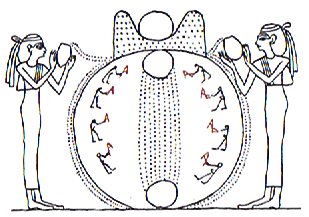 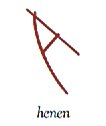
"April (Vaitu Nui) + 6 months = "October (Tangaroa Uri).
The Sun king (Hotu) came to Easter Island in
"October 15 (288 = 2 * 144) and this was around 4
months after the Explorers had arrived in "June. 288
- 118 (= 4 * 29½) = 170 ("June 19), but 288 - 172
("June 21) = 4 * 29.
The name 'Easter Island' might therefore be understood as
referring not primarily to the time when the Europeans discovered
the island (on Easter Day A.D. 1722) but to the time
when Mother Nature (Earth) was due to give birth on Easter
Island, i.e. in October.
... In
reference to your question, 'How do the natives of
Easter Island obtain fire?' I [Mr. Croft] have to
answer that they cannot tell. Their forefathers,
like the ancient Romans, had their 'vestal' fires,
preserved from ancient times; but the 'Vestal
Virgins' of Easter Island were gray-headed and
gray-bearded old heathen priests. It was a part of
their duty, sacredly attended to, to guard the
eternal fire, which was neutral, together with its
guardians, in all wars.
From
this sacred fire the whole community - at one time a
large one - could obtain that useful 'element' from
time to time, as they needed it, for culinary and
other purposes. This custom is still kept up by a
portion of the community, while another portion rely
on the matches of Mr. Dutrou-Bornier for their
supply.
Another
portion of the community have learned from Gambier
Islanders (who were sent there by the Catholics, to
assist the priests) how to make fire: not by rubbing
two sticks together, as you ask in your letter, but
by rubbing the point of one stick on the side of the
other, until it makes a hot groove and eventually
fire - a work generally of from five to ten minutes.
In order to illustrate this, I have had a photograph
taken for you, showing you the natives in the very
act of producing fire, and have also sent you the
identical sticks used on that occasion.
You
will notice that the wood is of a soft and spongy
nature. It grows abundantly on these islands, and is
a variety known as the Hibiscus tiliaceus,
and called by the natives 'Purau' and 'Fau',
pronounced 'Purow' and 'Fow', 'ow'
being sounded as in the word 'how'. You can,
if you wish, obtain large quantities of it, by going
on board the vessels carrying oranges from these
islands to San Francisco; the orange crates are
mostly made of it. And you could also get one of the
Tahitian or other islanders, sailors on board of
such vessels, to make fire for you by the aid of
these sticks, and thus practically or ocularly
answer your own question, as they are all
experienced in the art ...
 |
 |
|
hau tea |
Cb2-2 |
|
Hau
Hau =
Thread, line, string, ribbon; this
is the name of the fibres of the
hauhau tree formerly used to
make twine, cloth, etc.; hau kahi,
fishing line for tuna; hau here,
line for eel trap; hau moroki,
strong, tough line, thread; hau
paka, fibres of the hauhau
tree, which were first soaked in
water, then dried to produce a
strong thread.
Ha'u
= Hat. Vanaga. Hat, cord; the tree
Triumfetta semitriloba. Van
Tilburg. Ta.: The tree Hibiscus
tiliaceus. Henry.
Hau. 1 a.
Hibiscus. b. Wick. P Pau.: fau,
hibiscus. Mgv.: hau, id. Mq.:
fau, hau, id. Ta.:
fau, id. 2. To contribute. Ta.:
aufau, to pay, to contribute,
to subscribe. 3. Hat, cap, helmet;
hakarere ki te hau, to take
off the hat. Ta.: fauurumaa,
war bonnet. 4. Dew; hakaritorito
ki te hau, to bleach in the dew.
P Mgv., Mq.,Ta.: hau, dew. 5.
To blow freshly, coolness, zephyr,
salubrious, breeze, wind (hahau,
ahau); kona hauhau,
kona hahau, a breezy spot;
ahau ora, agreeable breeze;
hakahahau, to hang out in the
air; hakaahau, to blow. T
Mgv.: hau, to blow,
blusterous, to breathe. Haua,
hoarse. (Hauha); araha
hauha, to wait for, to look
forward to. Hauhau, 1. dog
(onomatopoetic). 2 a. To scratch, to
scrape, to rub. b. Wood used in
plowing fire. 3. (hau 5).
Haumaru (hau 5 -
marumaru) cool, cold. Hauù,
to replace. Hauva, twin, cut
T. Hauvaero (hau 3 -
vaero) plume, aigrette, head
ornament. Hauvarikapau (hau
3 - varikapau) plume,
aigrette, head ornament. Churchill.
Pau.: Hau,
superior, kingdom, to rule. Mgv.:
hau, respect. Ta.: hau,
government. Mq.: hau, id.
Sa.: sauā,
despotic. Ma.: hau,
superior. Hauhau,
to attack. Ma.: hau,
to chop. Churchill.
Sa.: fau,
to tie together, to fasten by tying,
the tree (Hibiscus
tiliaceus)
whose bast is used for cord, the
kava strainer made therefrom,
strings in various uses;
fafau,
to lash on, to fasten with sennit;
faufau,
to fasten on, to tie together. To.:
fau,
to fasten up the hair, the name of
the hibiscus, the kava strainer made
therefrom;
faufau,
to fasten the outriggers of small
canoes; hau,
to fasten to;
fehauaki,
to tie. Fu.:
fau,
the hibiscus, the kava strainer;
faù,
fafaù,
faùfaù,
to attach, to tie. Niuē:
fau,
fafau,
to make by tying. Fotuna:
no-fausia,
to tie, to fasten. Ta.:
fau,
the hibiscus;
fafau,
to tie together. Pau.:
fau,
the hibiscus. Nuguria:
hau,
id. Ma.:
hau,
to bind, to fasten together;
whau,
a shrub;
whauwhau,
to tie. Ha.:
hau,
name of a tree with a practicable
bark. Mq.:
hau,
the hibiscus. Mgv.:
hau,
id.; hahau,
to join or tie with cords. Nukuoro:
hau,
the hibiscus, a garland. Mg.:
au,
the hibiscus. Vi.:
vau,
the hibiscus;
vautha,
to bind together. Churchill 2. |
"October - 6 months = "June. 288 - 152 ("June 1) =
136 (alluding to Alcyone in May 16). And 288 - 115 ("April 25) =
173 = 183 - 10. The Explorers left Easter Island 10
days after Hotu had arrived.
|
MARCH 8 |
9 (68 = 132 - 64) |
10 (*354 = 365 + 69 - 80) |
 |
 |
 |
|
Cb2-1 (25) |
Cb2-2 |
Cb2-3 (419) |
|
Eaha
te honu kua tupu |
i to
maitaki - o te hau tea |
te
hono huki - maro |
|
INVISIBLY CLOSE TO THE SUN (helical dates): |
|
May 11 |
12 (132) |
13 (*53 = *12 + 41)
ACRUX
(α CRUCIS)
|
|
"March 31 (*10) |
"April 1 (91 = 132 - 41) |
2 (*378 = *12 + 366) |
|
CLOSE TO THE FULL MOON (and nakshatra
dates): |
|
November 10 (314)
SIRRAH
(α Andromedae)
|
11
GEMMA
= α Cor. Bor. |
12 (*236 = 8 * 29½) |
|
"September 30 (273) |
"October 1 |
2 (*195 = *378 - 183) |
|
MARCH 15 |
16 (75) |
17 |
11 |
 |
 |
 |
|
Cb2-8 (424 = 300 + 124) |
Cb2-9 (425 = 392 + 33) |
Cb2-10 |
|
Niu |
moe te goe
Goe.
Milky Way. Vanaga. |
|
INVISIBLY CLOSE TO THE SUN (helical dates): |
|
May 18
(138 = 321 - 183) |
19 (*59 = 2 * 29½) |
20 (*60 = *243 - 183)
COR
CAROLI (α Canum Ven.) |
|
CLOSE TO THE FULL MOON (and nakshatra dates): |
|
November 17 (321) |
18 (*242 =
355 - 33 - 80)
SCHEDIR
(α Cassiopeiae) |
19 (*243 = 3 * 3 * 3 * 3 * 3) |
 |
 |
 |
 |
 |
|
Cb2-22 (46) |
Cb2-23 |
Cb2-24 (440) |
Cb2-25 |
|
ku kikiu - i te henua |
koia ra |
tagata tua ivi - te
henua |
tagata tua ivi - ki te
henua |
|
June 1 (152)
*72 (= 360 / 5) |
2
HASSALEH
= ι Aurigae |
3
HAEDUS
I =
Ζ
Aurigae
|
4
HAEDUS II
= Η Aurigae |
 |
|
APRIL 2 (92 = 4 * 23) |
3 (443 - 350) |
 |
 |
|
Cb3-1 (50) |
Cb3-2 (443 = 15 * 29½ + ½) |
|
E vae ra - ka oho - ki te
henua - kua huki |
ku kikiu - te henua |
|
INVISIBLY CLOSE TO THE SUN (helical dates): |
|
June
5 (2 * 78 = 12 * 13)
CURSA
= β Eridani |
June 6 (157 = 314 / 2)
*77 (= 157 - 80 = 161 - 84)
|
|
"April 25 (115 =
460 / 4)
Vaitu Nui 25
(E:17) |
"April
26 (4 ' 29) |
|
CLOSE TO THE FULL MOON (and nakshatra dates): |
|
December 5 (156 + 183 = 339)
*259 = 339 - 80
Mula-19 (The Root)
SABIK = η Ophiuchi |
December
6 (340)
*260 = *219 - 41
RAS ALGETHI = α Herculis |
|
Tangaroa Uri 25
(298 =
115 + 183) |
"October 26 (299) |
|
Kikiu
Kikiu.
1. Said of food insufficiently cooked and
therefore tough: kai kikiu. 2. To tie
securely; to tighten the knots of a snare:
ku-kikiu-á te hereíga, the knot has
been tightened. 3. Figuratively: mean,
tight, stingy; puoko kikiu. a miser;
also: eve kikiu. 4. To squeak (of
rats, chickens). Kiukiu, to chirp (of
chicks and birds); to make short noises. The
first bells brought by the missionaries were
given this name. Vanaga.
Kiukiu
(kikiu). 1. To resound, to ring,
sonorous, bell, bronze; kiukiu rikiriki,
hand bell; tagi kiukiu, sound of a
bell; kikiu, to ring, the squeeking
of rats; tariga kikiu, din, buzzing;
hakakiukiu, to ring. Mgv.: kiukiu,
a thin sound, a soft sweet sound. 2. To
disobey, disobedience; mogugu kiukiu,
ungrateful; ka kikiu ro, to
importune. Churchill. |
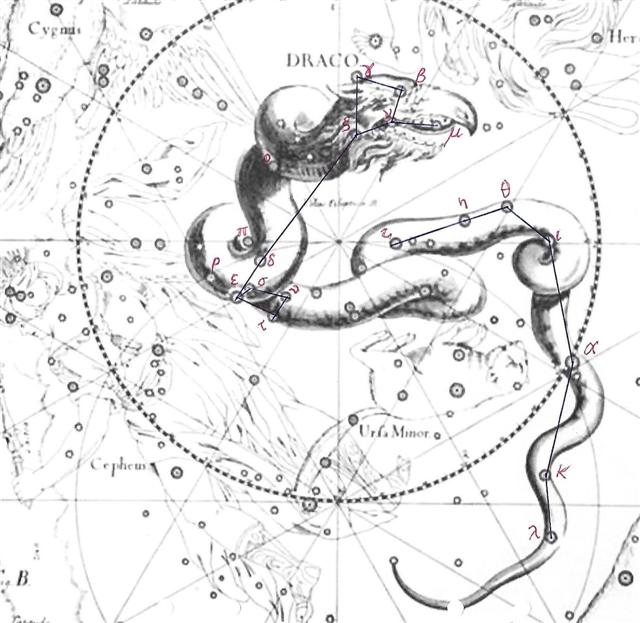 |
6 |
|
APRIL
4 |
5 |
6 (96 = 84 + 12) |
7 |
 |
 |
 |
 |
|
Cb3-3 |
Cb3-4 (445) |
Cb3-5 (54) |
Cb3-6 |
|
ko te
henua - te rima |
e kava |
i haga
rave ika |
ki kikiu -
te henua |
|
June
7
THUBAN |
6-8
ARCTURUS |
9 |
10 (161) |
|
December 7
ALRISHA |
8 (342) |
9 |
10 (*264) |
|
... Looking forward,
Taetagaloa is right, the
canoe is crooked. He slices
through all the lashings of
the canoe to straighten the
timbers. He realigns the
timbers. First he must again
position the supports, then
place the timbers correctly
in them, but Kuikava
the son of Likāvaka
goes over and stands upon
one support. His father
Likāvaka rushes right
over and strikes his son
Kuikava with his adze.
Thus Kuikava dies.
Taetagaloa goes over at
once and brings the son of
Likāvaka, Kuikava,
back to life. Then he again
aligns the supports
correctly and helps
Likāvaka in building the
canoe. Working working it is
finished
...
 |
 |
|
kava |
Cb3-4 (53) |
|
 |
 |
 |
|
Cb3-13 (454 = 392 + 62) |
Cb3-14
(63) |
Cb3-15 |
|
manu rere |
tagata - hanau hia |
kiore - henua |
|
CLOSE TO THE FULL MOON (and nakshatra dates): |
|
OCTOBER
15 (288) |
16 |
17 (*210) |
|
... The
ubiquitous 288 was also (cfr JANUARY 3) the
day number the Pope Gregory XIII had decided
on for launching his new calendar:
... The Julian calendar day Thursday, 4
October 1582 was followed by the first day
of the Gregorian calendar, Friday, 15
October 1582 (the cycle of weekdays was not
affected)
...
But at the time of rongorongo
- after the precession had corrected his
error in not going all the way down to
Caesar, only down to 325 AD (the Council of
Nicaea) - day 288 (= 325 - 37) had become
the proper place for Antares to rise with
the Sun. Tangaroa Uri 15 ("October
15) was when the Royal Double Canoe was
reaching Easter Island.
... The canoes of Ava Rei Pua and of
Hotu were seen near the (off-shore)
islets. On the fifteenth day of the month of
October (tangaroa uri) the
canoe of Hotu and the canoe of Ava
Rei Pua landed. On the fifteenth day of
the month of October (tangaroa uri),
Nonoma left the house during the
night to urinate outside ...
The yellow urine was an excellent fertilizer
and a beckoning sign for the Sun King. |
|
APRIL 18 (92 + 16) |
19 |
20 |
21 (111 = 175 - 64) |
22 (*32) |
 |
 |
 |
 |
 |
|
Cb3-16 (457) |
Cb3-17 |
Cb3-18 |
Cb3-19 (68) |
Cb3-20 (24 + 45) |
|
henua kua hoi |
kua ka te ahi o te henua |
o te henua kua hoi |
ko te henua kua vero te
ahi |
kiore - henua |
|
INVISIBLY CLOSE TO THE SUN (helical dates): |
|
SOLSTICE
(*92) |
22 (173) |
23 |
ST JOHNS
DAY |
June 25 |
|
'May 25 |
26 (146 = 173 - 27) |
27 |
28 (*68) |
29 |
|
"May 11 |
12
(173 - 41 = 132) |
13 |
14 (*54) |
15 |
|
CLOSE TO THE FULL MOON (and nakshatra dates): |
|
OCTOBER 18 |
19 |
20 |
21 (*214 = *31 + 183) |
22 (295 = 359 - 64) |
|
SOLSTICE |
22
(173 + 183 = 356) |
23 (*94
+ 183 = *277) |
CHRISTMAS
EVE |
December 25 |
|
'October 24 |
25 (356 - 27
= 329) |
26 (*250) |
27 |
28 |
|
"November 10 (314) |
11 |
12 (*236) |
13 |
14 |
 |
 |
 |
 |
|
Cb3-21 |
Cb3-22 |
Cb4-1 (464) |
Cb4-2 (73) |
|
manu rere i te
taketake |
te henua - mau i te
taketake |
manu rere |
kiore - henua |
|
The
specific epithet taketake is
Māori for long established, ancient, or
original. |
|
CLOSE TO THE FULL MOON (and nakshatra dates): |
|
OCTOBER
23 (*216) |
VEGA
(*281 = *217 + 64) |
25 |
26
(299 = *283 + 80 - 64) |
|
Ira,
Raparenga, Uure, Nonoma,
and Ringiringi got up and left
the 'Dark abyss of Hau Maka' (i.e.,
Rano Kau), arrived at
Hanga Te Pau, put the
canoe into the water, and sailed off to
Hiva, to Maori. Ira
left on the twenty-fifth day of the
month of October (Tangaroa Uri).
(E:86) |
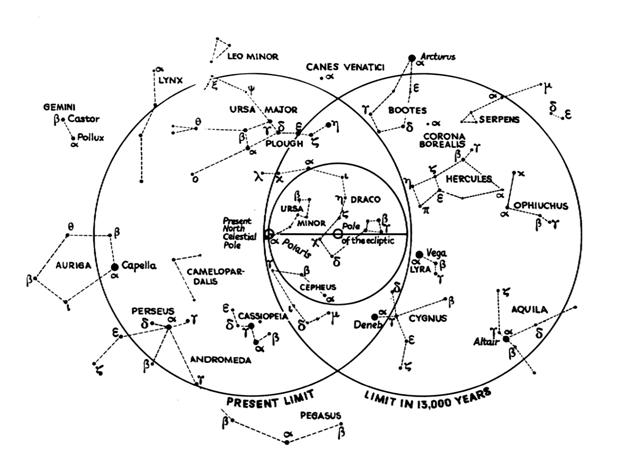 |
The 'alternative movement'
which could be observed from the rising Sun
going right and left and then back again in
a cyclical pattern along the horizon in the
east resembled the movement of a serpent or
of a firemaking contraption.

And this idea could have been
in the mind of the creator of the C text:
|
North |
Descending from midsummer: |
6
+ 7 = 13 |
6 +
26
= 32 |
 |
1 |
 |
|
June 22 (173) |
"May 14 (*54) |
|
kua ka
te ahi o te henua |
ko te
henua kua vero te ahi |
|
South |
Ascending from midwinter: |
9 + 10 = 19 |
 |
1 |
 |
|
henua kua hoi |
o
te henua kua hoi |
|
"November 10 (314) |
"November 12 (*236) |
| Hoki
To return, to
go back, to come back; ka hoki ki
rá, go back there! ana oho koe ki
Hiva, e hoki mai ki nei, if you go to
the mainland, do come back here again.
Vanaga.
1. Also, what; ki ra
hoki, precisely there; pei ra hoki,
similitude, likeness; pei ra hoki ta
matou, usage. P Pau.: hokihoki,
often. Mgv.: hoki, also, and,
likewise. Mq.: hoi, surely. Ta.:
hoi, also, likewise. 2. To return, to
turn back, to draw back, to give back, to
tack; mau e hoki mai, to lend;
hoki hakahou, to carry back; hoki
amuri, to retrograde; hakahoki,
to bring back, to send back, to carry back,
to restore, to renew, to revoke, to remove,
to dismiss, to pay, to pardon, to compress;
hakahokia, given up; hakahokihaga,
obligation. P Pau.: hokihoki, to
persist, to insist; fakahoki, to give
back. Mgv.: hoki, to return, to
retrace one's steps; oki, to return,
to come back. Ta.: hoi, to return, to
come back. Ta.: mahoi, the essence or
soul of a god. Churchill. |
26º
(Antares) - 8º (Rigel) = 18º and
24º (Pleiades) + 8º (Rigel) =
32º (= 214 - 182).
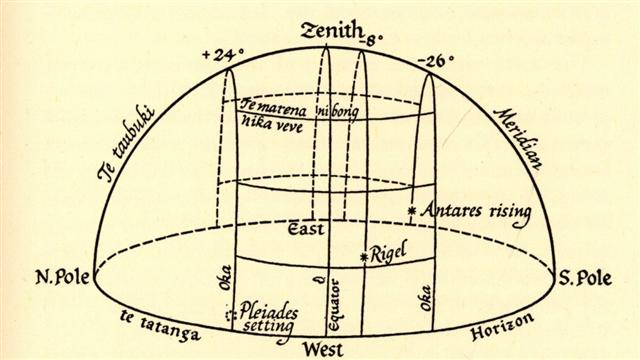
The pendulum of time moved in
a never ending cycle along the horizon in
the east, creating 'fire':
... 'fire' is actually a great circle
reaching from the North Pole of the
celestial sphere to its South Pole
...
... Another
portion of the community have learned from Gambier
Islanders (who were sent there by the Catholics, to
assist the priests) how to make fire: not by rubbing
two sticks together, as you ask in your letter, but
by rubbing the point of one stick on the side of the
other, until it makes a hot groove and eventually
fire - a work generally of from five to ten minutes
...
|
The hau tea glyph type is a
stylized picture of the horizon in
the east with a sun 'eye' (at right
in the glyph) together with the
horizon in the west (at left in the
glyph), connected by (in the north)
the 'roof of the sky' with vertex at
noon:

Sky 'roof', sun 'eye', and the two
horizons where sun will rise and go
down, are connected, and in between
is a rectangular area in which
Easter Island lies.
In the middle of the glyph a third
vertical line is drawn as a
theoretical construct (not real, not
connected with the rest of the
glyph).
It is the imagined line between
Vinapu and Anakena, a
line reaching from the south pole to
the north pole, a line for
'generating fire'. It is a line to
induce a new 'sun' (year) in
midwinter after the old one has
'gone out' (cfr the glyph type
vae and also how the Polynesians
used a 'fire plow' for creating new
fire).
The meaning of hau tea is
basically 'day light', the kind of
light which during summer magically
makes everything grow. |
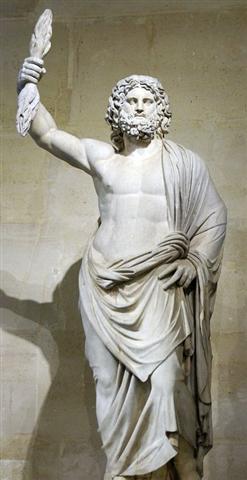 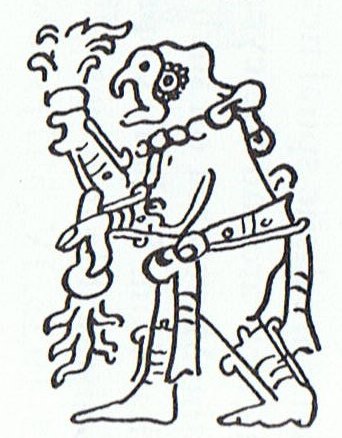
|








































